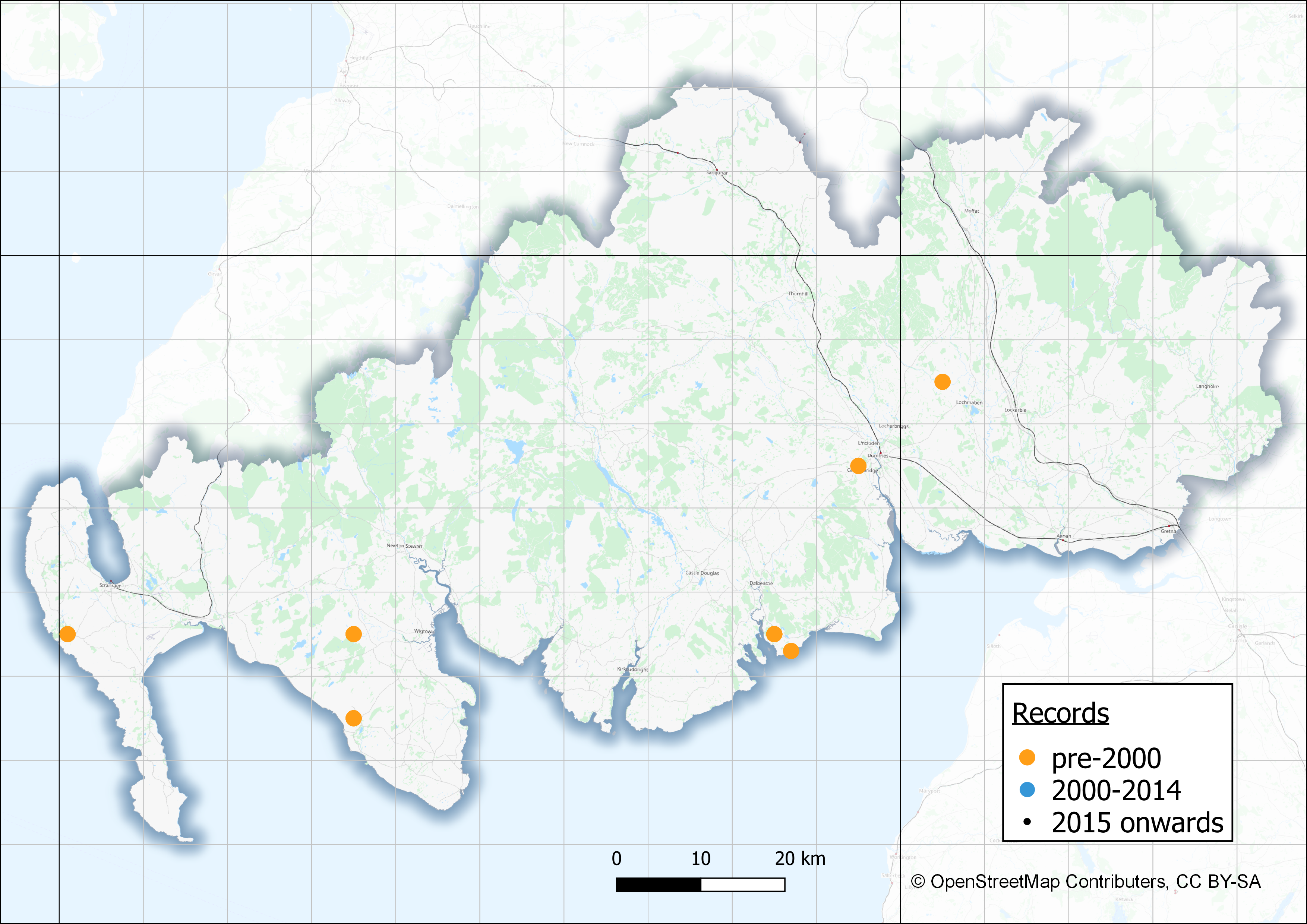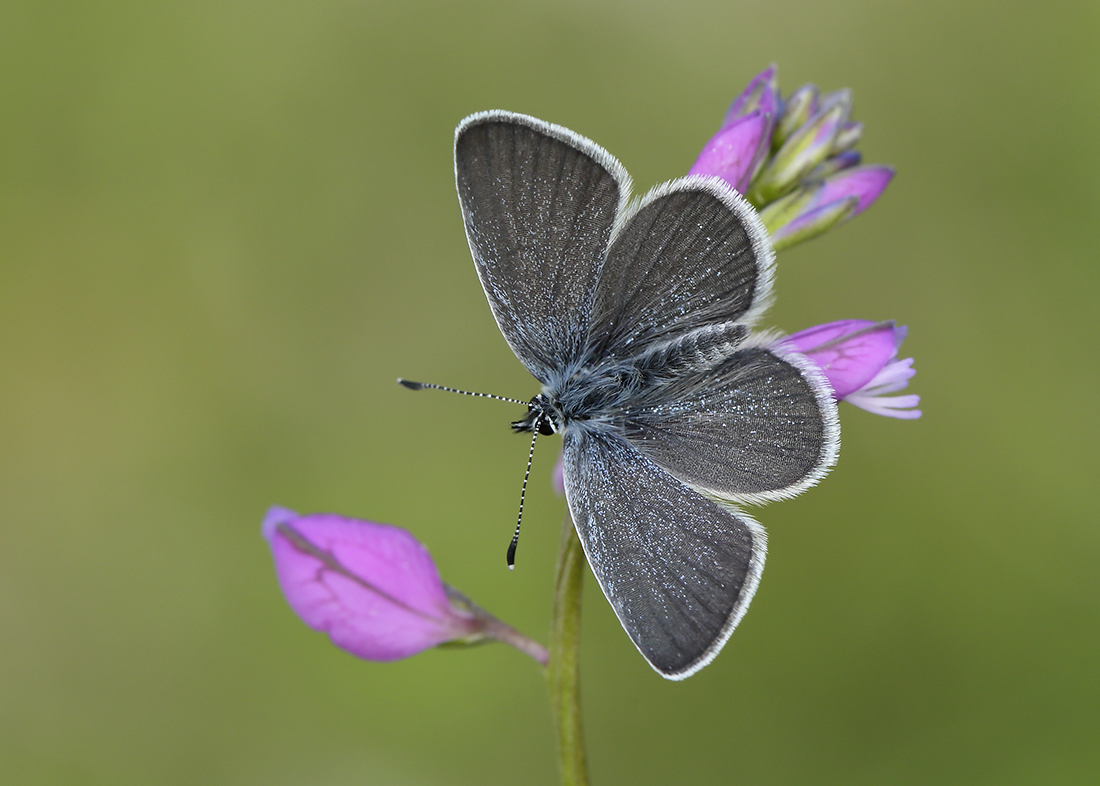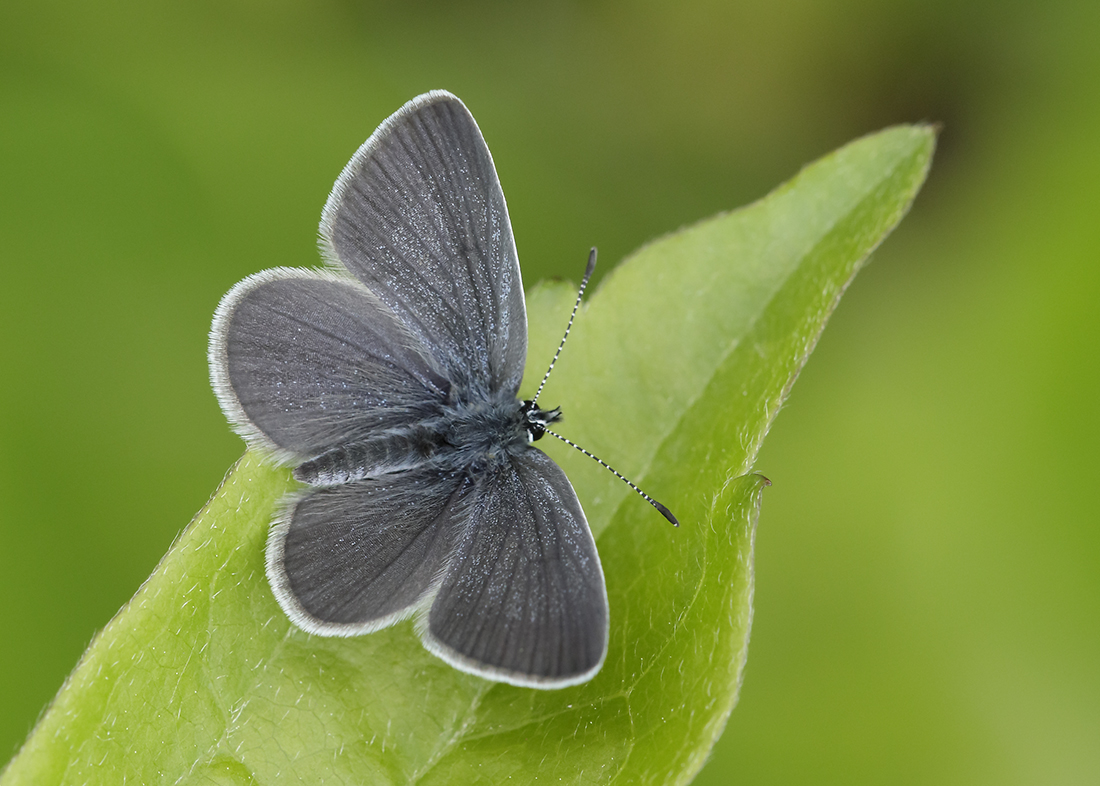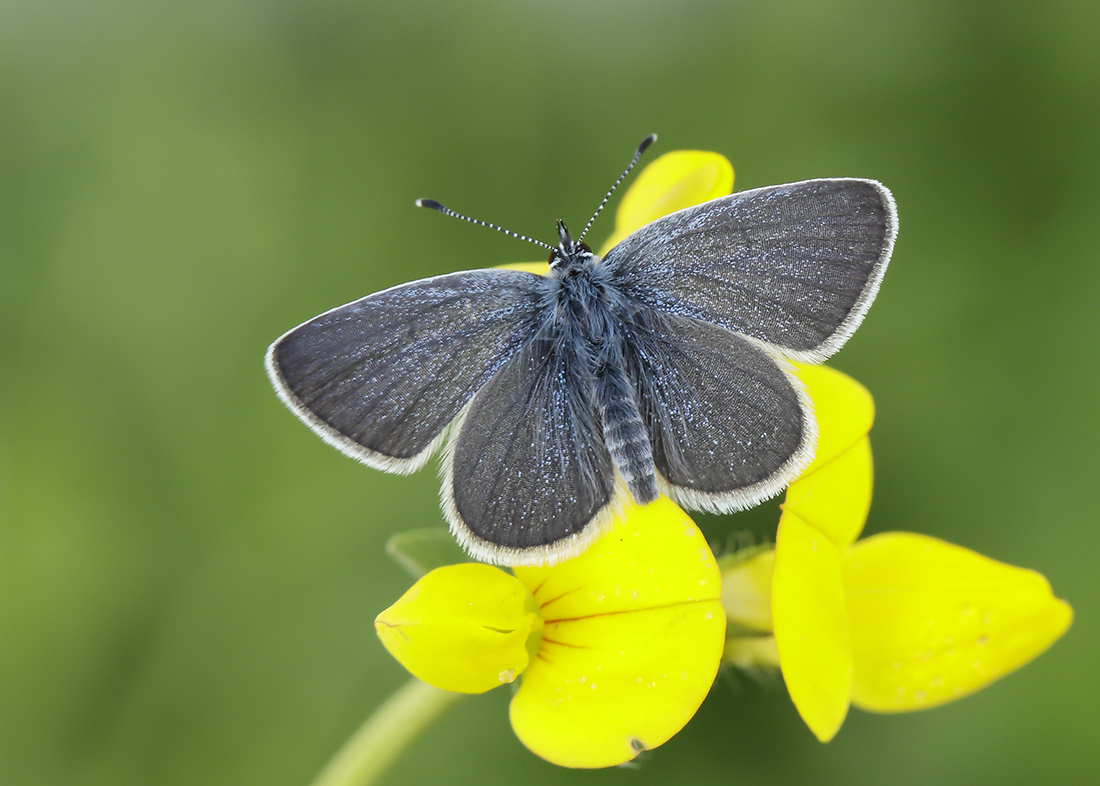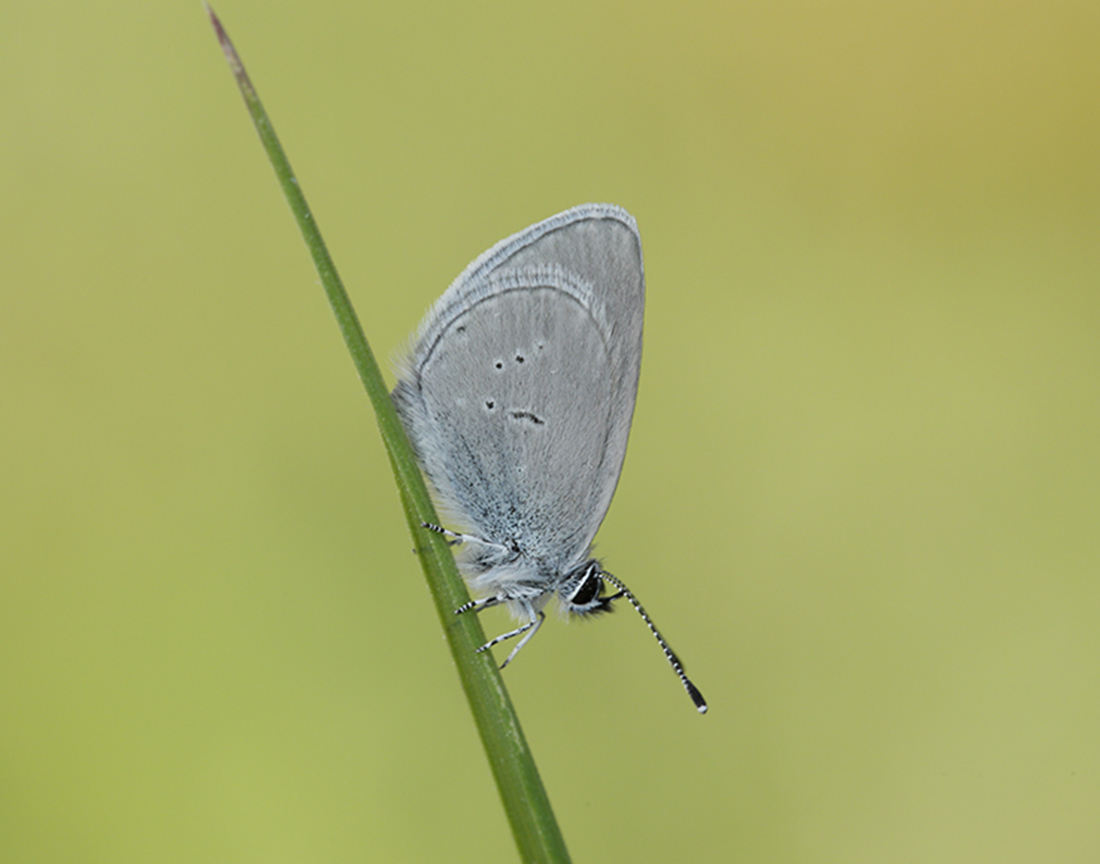Sadly the Small Blue seems to have been lost from Dumfries and Galloway (and also Ayrshire). The butterfly was present up until the 1900s on Arran, to the 1970s between Prestwick and Irvine, and the 1970s (or possibly the 1980s) in Dumfries & Galloway. It is however easily overlooked and it is just still possible that it is present in the region.
Identification
The Small Blue is the smallest butterfly in the UK, about 2/3 the size of the Common Blue. It is a dusky-coloured species, the males having only small amounts of blue scales on them, the females none at all. The undersides are a beautiful soft silvery grey, with no white or orange spots.
Sometimes we receive reports of Small Blues seen well away from likely habitats that turn out to be Common Blues. The butterfly’s dark grey colouration also means that another species regularly mistaken for Small Blue is the widespread, day-flying Chimney Sweeper moth.
Life cycle & flight period
Normally one generation a year, but a second can appear in warm years. The adults peak between early May and mid-June. Overwinters as a caterpillar.
Larval foodplant
The sole caterpillar foodplant is Kidney Vetch. When the caterpillars hatch from their eggs they feed on the flower heads, and later on the developing seeds.
Habitats
Kidney Vetch is equally at home on dunes, golf courses, sea cliffs and disused railway lines. However, despite being a widespread and relatively common plant, Kidney Vetch is only used by the Small Blue where it grows close to stony ground or rocks that provide a vital warm microclimate and bare ground for Kidney Vetch seed germination.
In dry weather the plant does not flower at all well, so on free-draining sites such as dunes, dry springs can be bad news for the butterfly. This tiny butterfly needs shelter and can be found roosting in tall grass and scrub on windy days.

